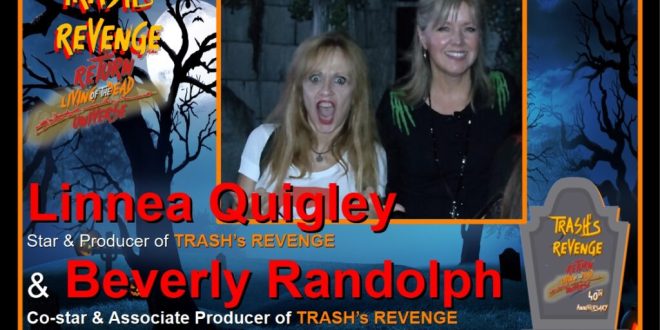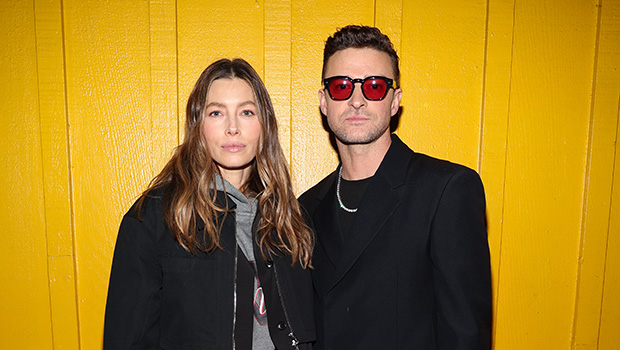
Is 2024 the year of the prequel? Michael Sarnoski’s A Quiet Place: Day One just became the best in John Krasinski’s horror series. It’s an earnest, frightening, and delicately layered New York City apocalypse flick that impresses well beyond sound-seeking monsters. Sarnoski throws shades of Cloverfield, the Alien franchise, and [checks notes] The Bucket List into his A Quiet Place origin spin-off, even retaining his devotion to sublime flavors from Pig. It’s a dramatically rich invasion flick that doesn’t sacrifice either teary-eyed emotionality or obscene extraterrestrial aggression, constructing a tonal rollercoaster that whizzes by without any jerks or bumps in motion.
A Quiet Place: Part One is your average survival narrative about a dying hospice patient named Sam (Lupita Nyong’o) who wants to taste her favorite pizza slice—East Harlem’s iconic Patsy’s Pizzeria—one more time before unknown entities eradicate humanity. She’s accompanied by her black-and-white cat, Frodo, who nimbly slinks around with silent steps like a faithful scout. Along for the ride is Eric (Joseph Quinn), a British law student overcome by fear. He’d rather follow Sam on her quest for the best ‘za than travel toward South Street Seaport, where evacuation boats are shuttling away survivors. So the trio heads towards Patsy’s — a woman ready to expire, a good-natured man seeking doomsday companionship, and a kickass feline who steals a few scenes.
It’s a film unlike the expectations set by Krasinski’s straightforward predecessors. The franchise’s sonically enraged aliens are a constant threat, but stay hidden for lengthy stretches. A Quiet Place: Part One doesn’t operate like a normal invasion horror-thriller—protagonists walk in the opposite direction of safety. Sam’s life expectancy has dwindled to hours, which becomes an enthralling wrinkle in Sarnoski’s storytelling. He’s never bound to creature-feature tropes about exhaustive survival stipulations. Sam’s content with her fate, which twists into a shockingly sincere tale about taking one last shot at happiness, even with death and destruction all around.
New York City is the perfect location for an A Quiet Place movie, as introductory text reminds us about the city’s noise pollution. My ears still hum from the eight years I spent working in Manhattan and living in Brooklyn. Sarnoski’s direction finds romantic depictions of a silenced New York City that can also be dreadfully uncomfortable, depending on the scene. As Sam strolls down sunshine-kissed avenues without a single car honking, or Frodo pit-pats over rubble like a dystopian playground, the city becomes an eerie yet serene ghost town. As Joe climbs steel foundation beams out of harm’s way, some type of blob-covered feeding nest below, the overwhelming skylines become his enemy.
It’s very akin to Cloverfield and how destroyed landmarks add too-real discomfort. New York City becomes a unique character, brought to life in similar ways by filmmakers from Martin Scorsese to Woody Allen.
Then you have Lupita Nyong’o and Joseph Quinn matching each other’s phenomenal performances — there’s no overshadowing or outshining. Nyong’o’s eyes, projectors the size of saucers, are endlessly emotive (essential in a film that lacks dialogue). Quinn’s no slouch as an anxiety-addled lemming in business casual attire, whose compassionate partnering with Sam becomes a feel-good union of lost souls. Sarnoski asks his actors to be multi-hyphenates given how A Quiet Place: Part One glides through subgenres, and neither slacks. Whether they’re mutely “laughing” while doing magic tricks in an empty bar, or swimming for their lives through drainage systems while an alien pursues overhead (think Aliens), Nyong’o and Quinn pass each assignment with flying colors. Their chemistry is neon-bright, their complementary presence always captivating, and their investment in tragic yet touching arcs feels authentically on par with yearly awards contenders.
Sarnoski never fumbles his leap from indie darling Pig to a grand-scale Hollywood experience. The intensity of barbaric attack sequences as aliens blur past the screen and yank noisy victims promotes adrenaline surges. Speed kills as flailing creature limbs eviscerate bystanders, but monsters don’t hide behind distorted mad dashes. Special effects designers uphold the freaky details of Krasinski’s critters, from uncomfortably gangly, almost insectoid appendages to protective facial flaps that reveal snarling teeth underneath. As Joe and Sam sprint away from these streaking cosmic beats, Sarnoski empowers the humans’ critical thinking skills because they aren’t legging out a victory.
The thematic softness of A Quiet Place: Part One is a surprise, showcasing Sarnoski’s behind-the-camera talents. Non-confrontational moments between Joe, Sam, and Frodo leave indelible impressions. The helplessness as Sam and Joe exhale mighty screams in rhythm with masking thunder roars, their only cathartic release. The torture as Sam hovers her fingers over a piano key, reminiscing about her musician father (Sarnoski makes us question if this is where Sam’s journey climaxes). Every second of A Quiet Place: Part One matters, making you feel something. Sam’s ability to dictate her own probable death and Joe’s willingness to stay by her side is brimming with sensitive expressions, from tragedy to empathy to resilience and beyond. Sarnoski never falls into the “scare first, develop later” trap some horror directors cannot avoid, and he’s a better filmmaker for playing against convention.
As far as gripes, while the visual world-building is lush, some alien explainers are passed right over. In a very “Alien egg chamber” spot, we see one of the creatures crack open and devour whatever’s inside stringy orbs as Joe watches — and then it’s never brought up again. Djimon Hounsou’s character from A Quiet Place Part II features heavily in the beginning puppet theater portion and not-to-be-spoiled end, but he feels forced into the New York City picture. Alex Wolff has a decent ride as Sam’s affectionate nurse, Reuben, but his inclusion comes with an inevitable pre-determined destiny. Sarnoski may get too distracted by Sam and Joe’s blossoming connection, and that overrides deeper lore examinations.
Plain and simple, A Quiet Place: Part One is a striking achievement in monster cinema that provokes mayhem but promotes togetherness under the gloomiest circumstances. Lupita Nyong’o and Joseph Quinn are a revelation together, playing off each other like decades-old chums. Everything feels so grandiose and natural, stressing Michael Sarnoski’s coolness under the pressures of a massive storytelling undertaking. Life’s short; it can end at any time, and we all deserve pizza. Who knew that’s the message we’d be taking from this stunning interpretation of living life to the fullest? What an unpredictable, highly entertaining, and profound riff on the complexities of mortality—with monsters.
Movie Score: 4/5






:quality(85):upscale()/2024/06/27/870/n/1922564/da66c638667dc35c6f8267.48851145_.jpg)





















